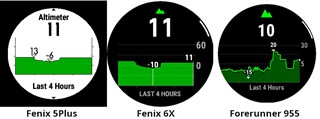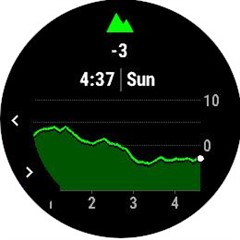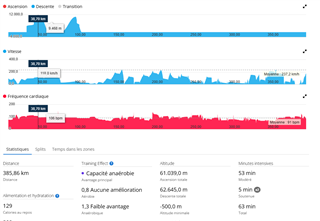Update: Another day, another test, and completely differemt results. All three watches showing the same erratic drift. I should not have posted about results of only one test. The original text of my post is below here.
I set the Sensor Mode to Barometer Only now and ignore the altimeter. The Auto setting just doesn't work very well while the weather is so variable.
‐---‐----------------
I was running with three devices today (testing a repaired Fenix). The run is visible as the dip in the graph on the two Fenix-es. But what's up with the Forerunner? It seems random.

The FR955's altimeter was always climbing or descending steadily during sleep, but now it has lots of variation all during the day and night. As a result, the barometer graph is just a blocky thing that isn't easy to interpret.

I think this might be a bug.



